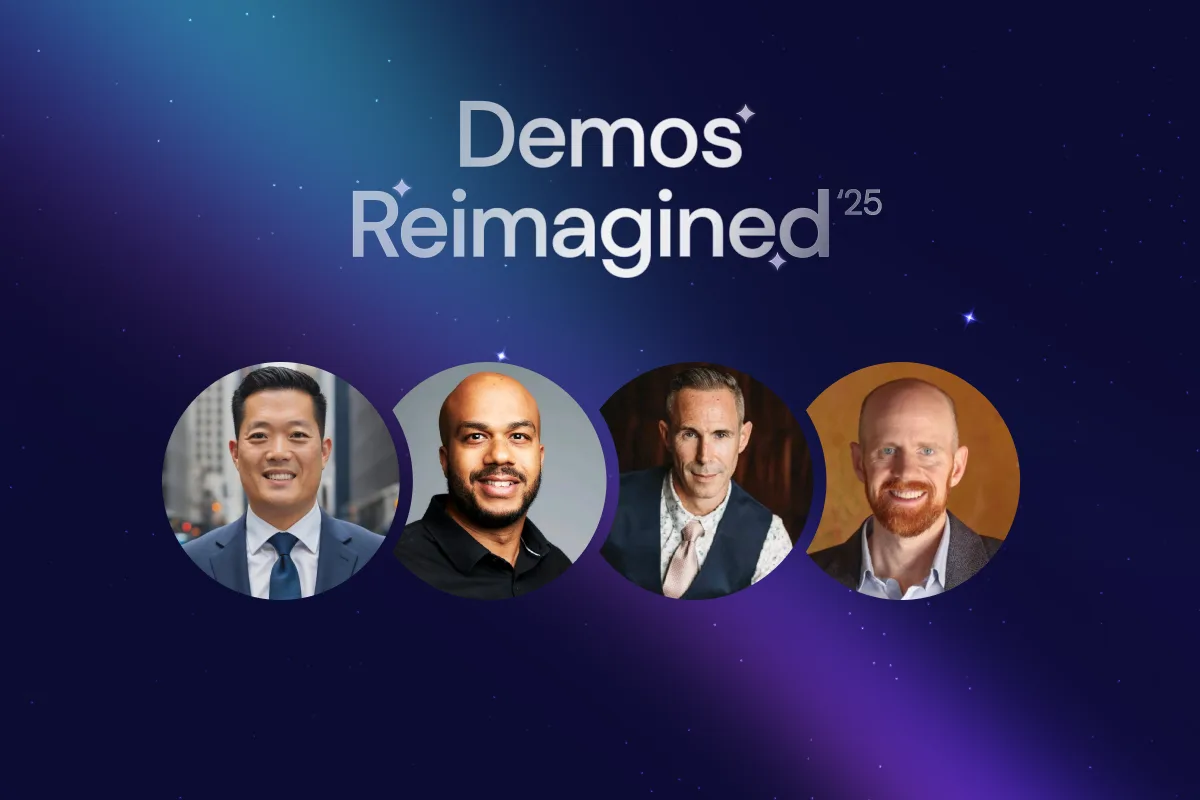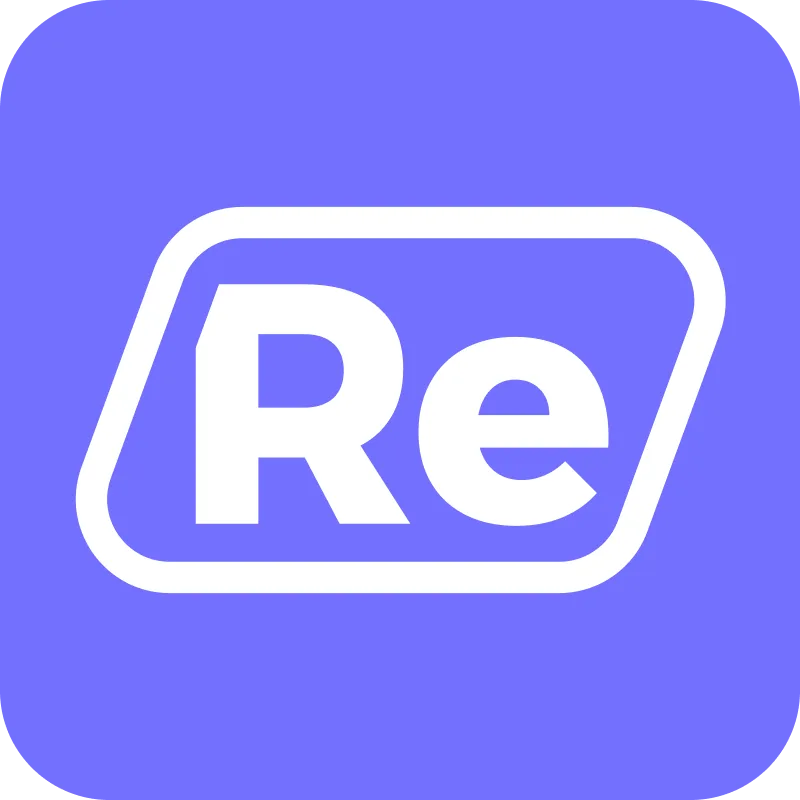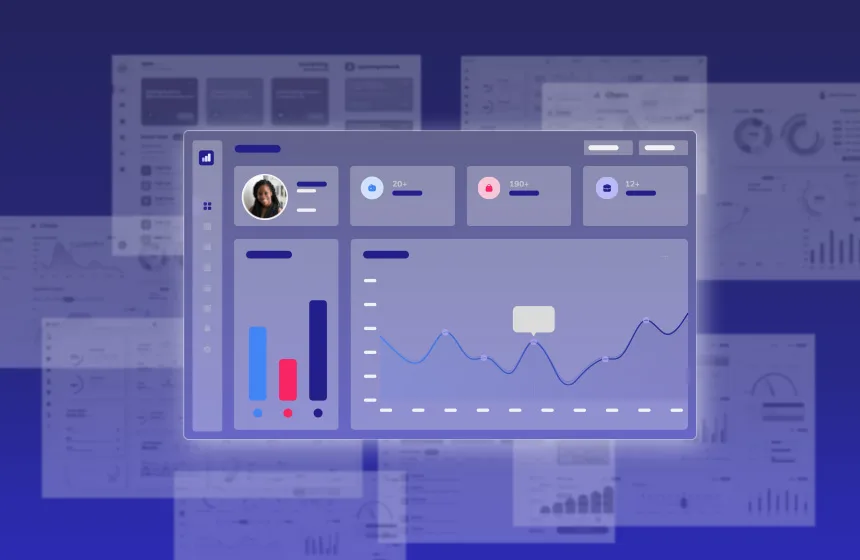Accelerate deals and increase win rates with the leading enterprise AI demo platform.
The Future of Presales: Key Insights from Industry Leaders

October 1, 2025
Table of Contents
The days of Solutions Engineers (SEs) just showing up to do product demos are over. And honestly? That’s a really good thing.
At Demos Reimagined ‘25 we brought together a group of presales leaders to discuss the evolution of the presales function and where it’s headed. Hosted by Chris Mabry (VP of Solutions and Partnerships at Reprise), we were joined by Terrence Felton (Senior Leader, Solutions Engineering at Cisco), Kristopher Friday (VP of Solutions Consulting at Outreach), and Seong Park (CCO at Chronosphere).
What emerged wasn’t just a conversation about tools or tactics. It was a blueprint for how presales teams need to fundamentally rethink their role in the sales process.
Presales Professionals As Strategic Co-Captains
The role of SEs has transformed from technical demonstrators to strategic partners. This matters because today’s buyers conduct extensive research before ever speaking with a vendor. They arrive to calls with sophisticated questions that require deep expertise from the first interaction. If you’re waiting until the demo stage to get involved, you’ve already missed the chance to shape how they’re thinking about the problem.
That’s why smart presales teams are getting involved way earlier: during qualification. This is where you can actually build relationships with champions inside the account and figure out what metrics actually matter to their business. The role has evolved from technical demonstrator to “co-captain,” who can help qualify whether an opportunity is even worth pursuing, run discovery, and frame the entire business case.
This shift gives presales professionals a genuine seat at the revenue table. When you’re involved from qualification through close, you’re not just a resource to be deployed, you’re a strategic partner with the authority to push back on poorly qualified opportunities and guide account strategy.
Use-Case Storytelling Trumps Feature Tours
The comprehensive “harbor cruise” demo is dead. Today’s buyers want to understand how you solve their specific pain points, immediately. They’re also not following linear sales processes anymore. They’re researching on their own timeline and expect relevant information when they need it, not when your methodology says they should.
The solution? Short, focused “vignette demos” that are 5-10 minute and centered on a single use case or vertical-specific challenge. These bite-sized demos work as demand generation content, leave-behinds for champions to share internally, and quick proof points that you actually understand the problem.
Being rigid about “no demo until after discovery” can cost you deals. Buyers will simply move on if they can’t verify you have a viable solution. The key is meeting customers where they are while still maintaining strategic control of the conversation.
The Biggest Time Waste: Preparing for Every Possible Question
One of the session’s most provocative insights was that the biggest time waster in presales is trying to prepare a demo that addresses every potential question. Instead of attempting to anticipate and demo every scenario, SEs need stronger objection-handling skills and the confidence to say “let me get back to you on that.”
Even more problematic? Unqualified, last-minute demos that drain team capacity without moving deals forward. When an AE requests a demo with no understanding of the customer’s pain points or deal size, you’re setting your team up for burnout while delivering minimal value.
The fix is simple but requires cultural change: empower presales teams to push back. SEs should feel confident demanding proper qualification before investing their time. This isn’t gatekeeping — it’s ensuring your team brings their best to opportunities that matter. You don’t get paid to do demos. You get paid to close.
AI as Enabler, Not Replacement
We’re in the early innings of AI adoption in presales, and the technology should enhance rather than replace the human elements of the role. Right now, we’re all in a “race for AI understanding.” Vendors, customers, and partners are all learning together.
Leading teams are embedding AI throughout their workflows: writing RFPs, crafting emails, answering product questions, etc. The goal is building fluency that makes them better guides for customers navigating their own AI adoption.
But here’s what AI won’t do: replace the human connection. Complex B2B decisions require trust, relationship-building, and nuanced understanding that only comes from human interaction. What AI does provide is an “excuse-eliminator.” There’s no reason to show up unprepared when AI tools can quickly help you understand a customer’s business model and industry. The technology should free you to be more consultative, not eliminate the need for consultation.
The Return to In-Person Engagement
After years of back-to-back Zoom demos, presales teams are rediscovering the value of face-to-face interaction. The problem? Many organizations haven’t adjusted their expectations.
The pandemic normalized five or more demos per day from home offices. Traveling to customer sites makes that velocity impossible, yet some companies still measure success by demo count. This creates a burnout crisis that no amount of “No Meeting Fridays” or wellness surveys will solve. Leaders need to address root causes: workload expectations, margins, and culture.
The value of in-person meetings — those elevator chats with your champion, the relationship-building that happens over coffee — cannot be measured in demo count alone. A strategic, in-person workshop that advances a seven-figure deal is worth more than three remote demos for unqualified opportunities.
Progressive teams are already tracking in-person workshops as distinct activities in their CRM, recognizing how these engagements accelerate deal velocity and create better outcomes. Meeting someone face-to-face can turn detractors into champions overnight.
Continuous Learning Through Team Spotlights
Formal training can’t keep pace with how rapidly products, technologies, and buyer behaviors evolve. That’s why leading teams are using “SE spotlights” during team meetings — regular sessions where individual contributors share how they’re using new tools, tackling challenges, or leveraging AI in their workflows.
This grassroots approach to enablement works because it’s peer-driven, practical, and creates a culture of experimentation. Teams learn from each other’s innovations in real time, whether that’s a clever ChatGPT prompt for understanding a new vertical or a novel approach to discovery.
The Path Forward
These insights point to a presales function that is more strategic, more selective, and more human than ever before. Success requires moving beyond the outdated model of SEs as technical resources who wait to be deployed for demos.
Modern SEs have to be business consultants who qualify opportunities, build champions early, deliver targeted value through focused demos, and maintain the confidence to push back on work that doesn’t serve the ultimate goal: closing meaningful business.
The future of presales isn’t about doing more. It’s about doing what matters, with the right preparation, for the right opportunities, in the right format. Teams that embrace this evolution won’t just survive the changing landscape; they’ll define it.
Want to watch the full conversation? You can check out the recording of the session here.






